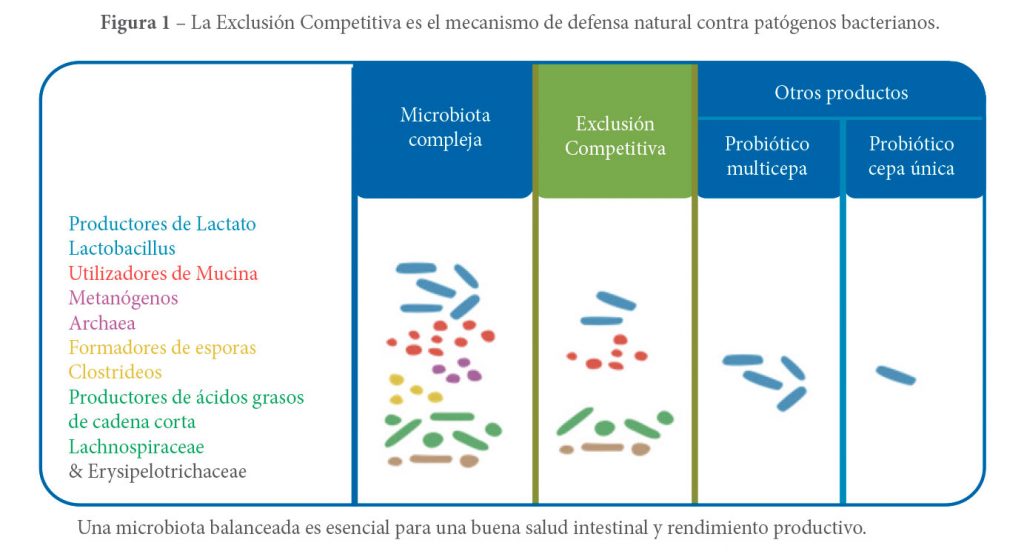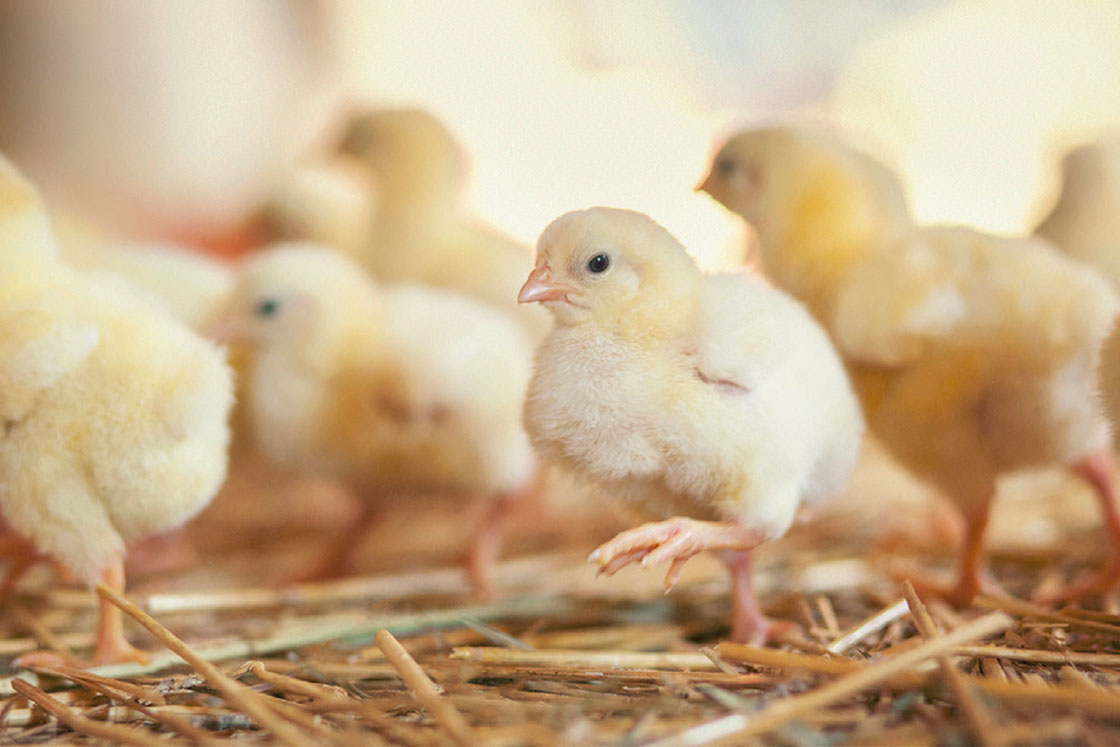Competitive exclusion is increasing in popularity
Competitive exclusion (CE) is becoming increasingly popular as a method to improve health and performance in poultry production. The development of antimicrobial resistance and the understanding of a balanced gut microbiota to improve health are the main growth factors of this trend.
The gastrointestinal tract acts as a border between internal organs and the outside world. About 80% of the cells of the immune system are found in the gastrointestinal tract. Additionally, the nutrients necessary for the bird’s growth are absorbed in the intestine. Therefore, the gastrointestinal tract is important for both the health and performance of the bird. The intestinal lumen contains the most complex microbial ecosystem in the world, with over 1012 cells per gram of intestinal content.
The complex gut microbiota of the bird can be considered the result of at least tens of millions of years of evolutionary selection. Therefore, the gut microbiota has impressive genetic potential to synthesize a wide selection of substances that are, in many situations, beneficial for the survival of birds until they reach reproductive age. In other words, the complex microbiota present in the gut of healthy birds is there for a reason. A normal intestinal microbiota is beneficial for the bird’s health and nutritional status.
EC: Natural defense mechanism
The presence of normal microbiota in the intestine makes it difficult for pathogenic bacteria to enter through the gastrointestinal tract, since there is competition for living space, binding sites intestinal and nutrient availability.
In addition, many intestinal bacteria are capable of producing antibacterial substances and the intestinal microbiota is also believed to play a fundamental role in the development of intestinal immunity. This mechanism, where a healthy microbiota facilitates the health of the host, is called Competitive Exclusion (CS).
While vaccines offer effective protection against the bacterial strains for which they are intended, a complex and healthy gut microbiota can reasonably be expected to be beneficial to the bird’s health from a broader perspective.
Currently, EC products for birds are the most frequently used to establish a natural microbiota in the intestine at the first day of age.
The key role of the balanced gut microbiota
Under natural conditions, the mother hen acts as a source of intestinal microbiota for chicks at the first day of age. In current conditions of extensive rearing, with hatcheries, this link with the mother has been lost. As chicks are particularly sensitive to pathogenic bacteria, such as Salmonella spp., The lack of a strong and healthy gut microbiota contributes to the susceptibility of chicks to different pathogenic bacteria and intestinal disturbances.
In past decades, many antibacterial products have been widely used in poultry production, both to facilitate growth and to avoid problems with bacterial pathogens. However, it is reasonable to assume that many of these products also had a negative impact on the natural gut microbiota and possibly even the bird environment.
The role of the healthy gut microbiota on host health has been studied more extensively, and the problems associated with antibiotic resistance have also gained more attention.
Consumers in most markets are increasingly aware of quality issues in poultry production, especially when it comes to microbiological quality, antibiotic use and animal welfare.
Global trend towards regular EC use
Although the concept of EC has been used for decades in some markets, in particular to control Salmonella spp. The concept of EC has recently been applied on a global scale, in order to limit the need for antibiotic treatments and meet established requirements and quality of consumers.
A common practice for applying the concept of CE in birds is the treatment in the incubator of newborn chicks with bacterial preparations from healthy adult birds. The concept of EC was originally developed to control Salmonella in broilers, but later expanded to involve other pathogenic bacteria such as E. coli and Clostrium perfringens.
Currently, there are competitive exclusion products on the market such as Broilact from Orion Pharma. Products containing a wide variety of selected microorganisms (culture not defined) originating from a healthy donor bird and therefore can be used to establish a complex and healthy gut microbiota in day-old chicks within hours of treatment administration .
The use of EC as a method of control of Salmonella spp. and some pathogens in poultry farming, has been widely documented in published literature during the last decades. In some markets, such as Finland, EC products have been used extensively for decades.
One of the most interesting recent studies * was the challenge study conducted in Curitiba, Brazil, where a single dose of EC product on the first day of age was effective in reducing S. Heidelberg colonization in the cecum of broilers. at 28 days of age. S. Heidelberg represents one of the most significant challenges in Brazil, and has been frequently reported as multidrug resistant.
Difference between EC and probiotics
In addition to the competitive exclusion products used to establish a normal gut microbiota, there are also probiotic products available in the poultry market.
In contrast to EC products (undefined mixed cultures), probiotic products (defined cultures) are not used to establish a complex microbiota in the intestine, since they introduce only one or a few strains of bacteria into the intestine. (Figure 1).

Furthermore, it is often claimed that probiotics have benefits for the health and productive performance of birds through a positive impact on the gut microbiota but in a different way.
Even the term “competitive exclusion” is often used confusingly in the marketing of probiotic products that contain only one or a few bacterial strains. Therefore, it is always advisable to carefully study the available published literature that demonstrates the actual efficacy of the product for its intended purpose.
Integral approach
Based on current literature and experience of use, competitive exclusion clearly represents a highly interesting opportunity to improve health and optimize productive performance in birds, without the regular, large-scale use of antibiotics.
However, although optimal intestinal microbiota plays a key role both for health and performance, it is obvious that reaching the optimal production efficacy requires a holistic approach, where the farm conditions, feed quality, management routines, and so forth are optimised and systematically monitored also.
* Study in process of publication
Dvm Pekka Rantajärvi, Real Rainmakers
Research Specialist for Leveking.
ilender – Orion Pharma Authorized Distributor






